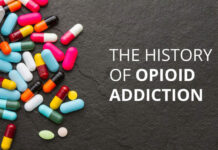Opioid use disorders are a serious problem that affects millions of people worldwide. This chronic disease can cause serious harm to many individuals suffering from them. It not only poses substantial risk to individuals but also to the society as a whole, this is one of the reasons why you shouldn’t ignore your mental health. However, medication for opioid use disorders can help individuals to recover from their addiction and live healthy and fulfilling lives.
This comprehensive guide examines the different types of opioid use disorders medication. This will also provide information to help individuals make informed decisions in choosing the right treatment option.
Medications for Opioid Use Disorder
Several medications are available to treat opioid use disorder. Each of these drugs comes with unique benefits and drawbacks. The three most used medications for opioid use disorder are methadone, buprenorphine, and naltrexone. Let’s take a closer look at each of them.
Methadone
Methadone is an opioid agonist that is administered orally once a day. It works by binding to the same receptors in the brain that opioids bind to. This helps reduce withdrawal symptoms and cravings. Methadone has been used for decades to treat opioid addiction. It is also considered one of the most effective medications.
One advantage of using methadone is that it is a long-acting drug. It helps the individual maintain stable blood opioid levels throughout the day. It also helps reduce the risk of recurrence or relapse. Additionally, methadone is less likely to cause respiratory depression than other opioids. For this reason, it makes it a safer option for people with breathing problems.
Although methadone can be an effective treatment for managing opioid addiction, it’s important to be aware of its potential side effects and addictive nature. Some common side effects of methadone use include constipation, dizziness, and lightheadedness. Therefore, it’s crucial to carefully follow the prescribed dosage and regularly communicate with a healthcare professional to manage any potential risks associated with methadone treatment.
Buprenorphine
Buprenorphine is another opioid agonist administered sublingually or as an injection. It works similarly to methadone, by binding to the same receptors in the brain that opioids bind to. This drug helps reduce withdrawal symptoms and cravings. Buprenorphine is often used as an alternative to methadone. This is due to the fact that it has a lower risk of addiction and overdose.
Unlike methadone, which is a long-acting agonist, one benefit of using buprenorphine is that it is a partial opioid agonist. This means that buprenorphine has a ceiling effect. With this being said, once a specific dose is reached, the effects do not increase further. This can make it a safer option for individuals at risk of overdose. Buprenorphine can also be administered by a healthcare provider. This option makes it more accessible to individuals who cannot go to a methadone clinic.
However, like methadone, buprenorphine can have potential side effects. This drug may cause constipation, nausea, and vomiting. It can also cause withdrawal symptoms if not taken as prescribed.
Naltrexone
Naltrexone is another type of opioid use disorder medication. It is usually administered orally or as an injection. As an opioid antagonist, it works by blocking the effects of opioids in the brain. This reduces the desire or urge to use opioids. Additionally, naltrexone is used as a maintenance medication especially for individuals who have completed detoxification. It may also be used as an alternative to other medications.
One significant benefit of naltrexone is that it is not addictive. Individuals do not have to worry about becoming dependent on the medication. It is also not a controlled substance, making it more accessible to healthcare providers. In addition, naltrexone can be used with other therapies. Such as counseling or support groups, to improve treatment outcomes.
However, naltrexone can also have potential side effects, such as nausea, vomiting, and headache. It can also cause withdrawal symptoms if not taken as prescribed, similarly to buprenorphine. That’s why monitoring the potential side effects of this medication is crucial. Like with using any other drugs, working with a healthcare provider to determine the appropriate dosage is vital, too.
Choosing the Right Medication
When choosing the proper medication for opioid use disorder, several factors must be considered. Each individual’s situation is unique, and what works for one person may not work for another. So, it is crucial to work with a healthcare provider to determine the best course of treatment.
Factors to Consider
- The severity of addiction: The severity of an individual’s addiction is vital. This factor can play a role in the choice of medication. Methadone may be a better option for individuals with severe addictions. Whereas buprenorphine or naltrexone may be appropriate for those with milder addictions.
- Co-occurring mental health disorders: It is important to consider whether an individual has any co-occurring mental health disorders. This may include conditions such as depression or anxiety, as this may affect the choice of medication.
- Medical history: An individual’s medical history such as any allergies or previous reactions to medication should also be considered.
- Personal preference: Personal preference is also an essential factor to consider. Some individuals may prefer a medication administered orally. Whereas others may prefer one administered as an injection.
Hope for Recovery: Choosing the Right Opioid Use Disorder Medication
Treating opioid use disorder is critical for managing this chronic disease. Medications such as methadone, buprenorphine, and naltrexone are among the most commonly prescribed drugs for OUD, and each has its benefits and drawbacks.
To ensure the most effective and personalized treatment plan, individuals struggling with OUD should work closely with a healthcare provider. Medication-assisted treatment (MAT) is a highly effective approach to opioid use disorder medication treatment, which involves the use of medication alongside counseling and behavioral therapies. Combining medication with other treatments can significantly increase an individual’s chances of recovering from opioid addiction and achieving a healthy, fulfilling life.
Read Also: What Are Cocaine Withdrawal Symptoms?



































































